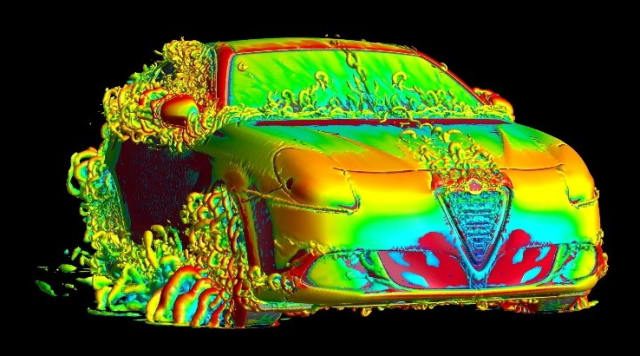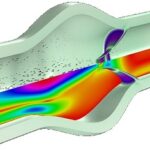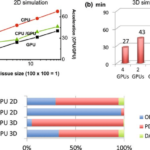A common question our FEA and CFD analysis customers ask us is “What hardware should I buy?” Purchasing a new high-performance computing (HPC) capable machine can be an intimidating process and lead to paralysis by three letter acronym. CPU, GPU, SAS, SSD, AVX – who came up with these names? The good news is that choosing the right HPC hardware for FEA and CFD analysis is mostly influenced by three factors: CPU, RAM, and hard drive. While there are additional bells and whistles we can use to fine tune our system, these three will have the greatest impact. Let’s take a closer look:
CPU – The number cruncher. The CPU will have a direct effect on how fast the required mathematical operations can be performed. There are two primary factors to consider when selecting a CPU – clock rate and number of cores. Clock rate, measured in Gigahertz (GHz), refers to the operating frequency of the CPU and determines the ultimate rate at which operations can be executed on each core. The number of cores, meanwhile, allows for parallelism of these operations. It’s common for a single CPU to have 8 or more cores that allow certain mathematical calculations to be performed simultaneously, greatly speeding up our analyses. It should be noted that your FEA or CFD code may require additional licenses in order to access parallelized computing, so take this into account when considering the cost of your new HPC system.
RAM – The CPU’s assistant. RAM acts as fast, temporary storage for the operating system and the applications it runs. If the amount of RAM on your system exceeds the size of the files created by the equation solvers during run time, then these files can be stored entirely in memory if your software supports this option. On the other hand, if the equation solver files are larger than the amount of RAM, they will have to be written to the hard drive. Reading and writing data to RAM can be one to two orders of magnitude faster than reading and writing data to the hard drive. Ensuring your system has sufficient memory to handle the typical analysis you run is key to efficiently performing FEA and CFD analyses.
Hard Drive – The CPU’s filing cabinet. The hard drive provides permanent storage of results as well as additional scratch space the equation solvers may need for large analyses. For analyses in which results get written frequently (i.e. nonlinear finite element analyses and transient CFD analyses), the hard drive can play a very important role in determining the solution speed. Since hard drive capacity is relatively inexpensive, the more important concern when buying a new system is I/O speed. RAID configurations (Redundant Array of Independent Disks) allow for multiple drives to be connected together, appearing as a single drive to the user and allowing for I/O to be performed in parallel. A dedicated RAID 0 array of four or more disks (SAS or SSD) and an independent RAID controller are ideal for a new system.
When building a new system, take into account the characteristics of not only the analyses you currently run but also what you plan to run in the near future. How much memory do they require? How often do they write to the hard drive? Ultimately you want to build a well balanced machine that is suitable for your analysis purposes. Having the appropriate hardware is key to getting the most out of your software!


